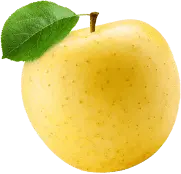
I must admit, I’m intrigued by hemp. At first it was just passing interest. I imagine like everyone else; it was the allure of the once forbidden. But then I read an acre of hemp is worth $60,000, compared to wheat at $600 per acre. That’s what really got my attention—the valuation of hemp at 100 times more than wheat. In the same article, market potential for hemp was positioned at somewhere from $5 to $50 billion. Working in business development as I do, those numbers screamed opportunity to me.
A more conservative number from Nielsen forecasts the U.S. hemp-derived cannabidiol (CBD) market, including legalized sales of food and beverage products, could reach $6 billion by 2025. Of the $6 billion, the market research firm estimates 44% will be food and beverage sales, with $1.7 billion in beverages and $950 million in food. Any way you look at it, there appears to be enormous potential for hemp, despite the uncertain regulatory environment in the food and beverage space.
Before I muse further, it’s important to note the difference between hemp-derived CBD and THC or tetrahydrocannabinol. The latter is the psychoactive compound, the former does not contain THC and is not a psychoactive compound but is sought for other natural health benefits. The range of natural health and wellness benefits attributed to CBD vary widely (e.g., relaxation, mental focus, relief from anxiety, chronic pain and inflammation). It’s also worth a mention there is little scientific research to support the efficacy of these claims.
Interestingly, along with forecasting sales for hemp-derived CBD food and beverages, Nielsen suggested there’s a “size-able opportunity for CPG snack and confectionery manufacturers within the CBD space.” This the company said was because of today’s snacking trends. Mindless snacking is out. Snacks with benefits—health and wellness—are in. This ‘smart snacking’ trend aligns with the natural healthy promise of CBD.
Tree Top’s wholly-owned subsidiary, Northwest Naturals has had a few customers requesting application work with CBD. Mostly, they’ve been for CBD-infused beverages. This is not surprising, because there’s already a lot of new product activity in CBD-laced beverages. When incorporating CBD into beverages, my colleagues found highly-flavored bases were needed to cover some of the off-notes from the extracts. This is not uncommon with botanical products. I have no doubt CBD-containing beverage sales will continue to grow because of their appeal to consumers looking for healthy lifestyle products.
While the regulatory framework for hemp-derived CBD is being hashed out and research gets underway to determine efficacy, product development will continue unabated because of the tremendous market potential. Will the country’s breadbasket eventually become a hemp basket instead? That remains to be seen. But there’s definitely smoke.
In the meantime while the CBD haze is clearing and you’re still thinking about new product innovation to supply the burgeoning healthy lifestyle market, you may want to consider fruit. There is already a body of research supporting the many health benefits of fruit. Check out our white paper—Building Better Brain Power: Fruits for Cognition


